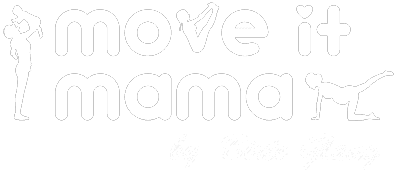Of course, as mamas-to-be we are incredibly excited about the time when our little miracle is finally born, but many new mamas are experiencing feelings of sadness, severe mood swings, lack of strength and exhaustion. In case this condition persists, it can lead to postpartum depression. Fortunately, there’s a secret to counteracting this, which I’m sharing with you today…
What is postpartum depression?
Postpartum depression describes a condition when young moms develop symptoms of depression within the first twelve months after giving birth. But beware, your partner can also get this common form of depression during this period. This is much less common, but still possible. For most women, the symptoms start in the first three months after giving birth. The condition is called postpartum or postnatal depression by doctors and in the literature.
Why does postpartum depression occur?
During pregnancy and birth, your body is exposed to a great strain and undergoes a hormonal change. Add to that the lack of sleep once your little cry baby arrives. The new daily routine with a baby is an enormous life change for every mom and you have to get used to it first. This is not an easy task and is therefore associated with emotional chaos for many women. Especially in the first days after birth, many new moms experience the so-called baby blues instead of maternal feelings of happiness.
Women who have previously suffered from depression or anxiety disorders are particularly susceptible to postpartum depression. Stress and stressful situations during pregnancy and after birth can be triggers for postpartum depression. With the right relaxation and breathing exercises, you can counteract stress and mental strain during pregnancy. Click here for more.
Usually the emotional roller coaster phase after the birth lasts only a short time and as soon as you get used to the new situation, it passes by itself. But if the mood remains depressed, it can lead to further postnatal depression. If this is the case it can take a toll on you and your little one, but don’t worry you can do something about it!

Your helping hand against postpartum depression: exercise & physical activities
Of course, so soon after the birth, the first thing you need to do is give your body time to rest, after all, it has done a great job. Very important are short naps, than try to get a cap of sleep when your baby is sleeping. Sleep is the key!
In addition, you can already do gentle exercises for your body in the postpartum phase to strengthen your self-healing powers and counteract postpartum depression. Then, as soon as you get the official okay from your doctor, you’ll get started with recovery, our postnatal phase 1.
Maybe you are still lacking the motivation for gentle training sessions even if the birth was already 2 months ago and your doctor has told you that you can start with the postnatal period. Then these tips might help you.
Believe me, you will feel directly how good it does you. Ideally, you should start your mommy training plan during pregnancy, so you can prevent postnatal depression and listlessness in advance. Regular exercise helps you deal with stressful situations by training your body to release less stress hormones – the sooner it learns, the better. 🙂
New energy through breathing and relaxation exercises
Breathing meditation combined with relaxation exercises are the secret recipe to fight postpartum depression already in the first weeks after birth. These exercises help you to increase your general well-being and improve your body awareness. In this way, you can recharge your batteries for the new everyday life and deal easier with the new mommy tasks. Because right now it is important to get to know each other and to fully enjoy every second. This will not only benefit you, but also your baby. Just take this short practice time a day for yourself to be there for your treasure with full energy! 15 minutes is enough, but even shorter sessions between 3-6 minutes will do your body good.
You can find out which other exercises are suitable for you in the official postpartum phase here.
Happy mama through exercise
You probably know (perhaps from your own experience) that exercise simply makes you feel better and in a good mood. In the postpartum phase, this may not work right away with the smallest exercises, but you are still gently getting your body going and activating the circulation with the smallest movements.
Basically, the body releases a happy hormone cocktail of dopamine, serotonin and endorphin during a sporting activity and, as the name suggests, makes you happy. Especially if you regularly do a gentle workout and, e.g., you already exercised regularly during your pregnancy, you may be able to take advantage of it even now. Happy hormones remain present in the body for a longer period of time. It also helps to reduce the release of the stress hormone cortisol. So you’ll feel more content in general after a gentle workout. This is absolutely true for the period of postpartum, our postnatal phase 1: just 15-20 minutes will help you release that cocktail of happiness!
Give your body time
But it’s important to note: in the postpartum period, an overdoing workout is totally wrong! Practice calmness and patience and enjoy the getting-to-know phase with your little bundle of joy. We don’t want to motivate you to a sweaty workout in the first weeks after birth, that would be completely wrong and absolutely counterproductive! Gentle breathing exercises and gymnastic exercises, on the other hand, will help you to activate your self-healing powers. In this way, your body and mind will find their balance despite the hormonal mess.
In the MOVE IT MAMA app I have put together a plan for you, next to the MAMA’s SPECIAL 15 you will find your WORKOUT OF THE WEEK. In the postpartum phase they are very gentle 3-6 minute movements for the body or just abdominal and pelvic floor breathing. All meant for a mama who has experienced an uncomplicated natural birth. A mama with an uncomplicated c-section can also do these exercises. If you are unsure, write us at support@moveitmama.de or even contact your doctor directly.
If you had complications during the birth, severe birth injuries or a complicated cesarean section, please strictly adhere to the recommendations given to you by your doctor or midwife, because then even the gentlest exercises are often taboo, at least for the first two weeks.
My tip: As soon as your body allows it, take your first walks in the fresh air. In the Mama News of the Week in our app, I set a goal of 15 minutes a day, increasing to up to an hour as the postpartum period progresses. Of course, you are welcome to do the breathing and relaxation exercises from our MAMA’s SPECIAL 15 outside. This is a special program for the postpartum phase and does twice as much good in the fresh air.

Moms need a helping hand too
There is nothing wrong with getting support from the outside world. Ask your family or friends for help. Don’t be ashamed, because it is natural to be overwhelmed or emotionally irritated in such a special situation. If you don’t get any support from your social environment, then I would definitely advise you to see a midwife or psychologist, who will help you with advice and support during this time.
The important thing is: don’t feel bad, because most mamas go through this roller coaster of emotions in the postpartum phase, you are not alone! With the right tips & tricks and some support, you’ll definitely make it through this time and become a #SuperMama, but you already are one – I’m sure of it! 😉
Keep it Moving,
Your Birte
Try MOVE IT MAMA 7 days for free
We give you a trial week in which you can test MOVE IT MAMA free of charge and without obligation.


